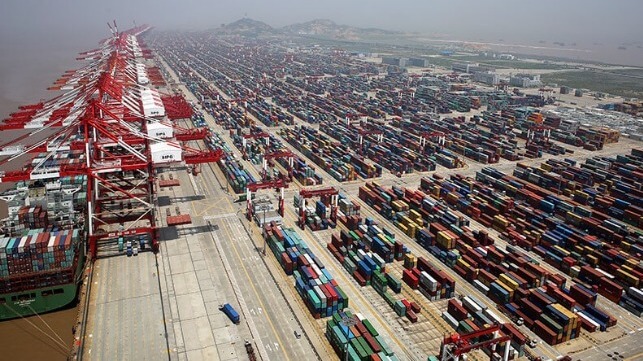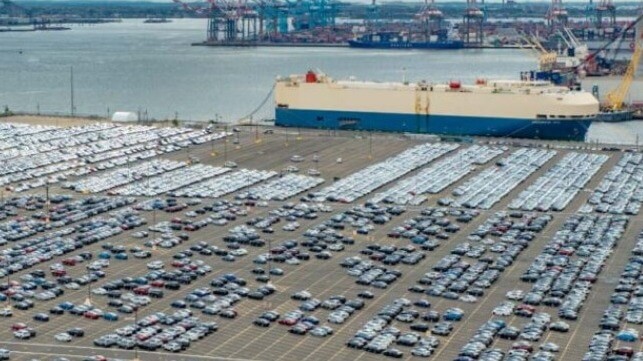Asian Ports Top World Bank Rankings While Many Large Ports Rank Lower

The World Bank is out with its latest port ranking and predictably ports in Southeast Asia continue to dominate the top of the ranks, but some of the world’s largest container ports, and most in the U.S., ranked far lower. The Container Port Performance Index they say is designed to pinpoint areas for enhancement while citing the critical role containers play in global commerce.
Looking at the top-performing ports, China’s Yangshan Port (Shanghai) earned the top spot for the second consecutive year, while Oman’s Port of Salalah retained the number two position and Tanger-Mediterranean in Morocco held steady in fourth. The port of Cartagena in Colombia rose to third and throughout the listing, some ports showed strong improvements. Tanjung Pelepas Port in Malaysia rounded out the top five.
At the bottom of the list, which grew with 57 new entrants overall, remains Cape Town, which was in last place at number 405 with South Africa’s Ngqura port at 404. Durban did not fare much better coming in at 398, but possibly more surprisingly Savannah (Georgia) was number 395, Oakland (California) at 397, and Prince Rupert (Canada) at 399. Major U.S. ports did not rank higher with Long Beach at 373 and Los Angeles at 375. Overall, U.S. ports failed to break the top 50, with Charleston highest (53), and followed by other regional ports including Philadelphia, Port Everglades, Miami, Boston, Wilmington (North Carolina), before reaching New York, the U.S.’s third-largest port, which ranked 92.
“While the challenges caused by the COVID-19 pandemic and its aftermath eased further in 2023, container shipping continues to be an unpredictable and volatile sector,” said Martin Humphreys, Lead Transport Economist at the World Bank. “Major ports need to invest in resilience, new technology, and green infrastructure to ensure the stability of global markets and the sustainability of the shipping industry.”
The World Bank says the report aims to aid in identifying areas for enhancement that would benefit not only the shipping lines but also national governments and consumers. They highlight that ports and terminals can cause shipping delays, disruptions in the supply chain, additional expenses, and reduced competitiveness.
Among the largest container ports outside China, Singapore ranks best (17). Antwerp is 76, Rotterdam 91, Hamburg 121, and Felixstowe 182.
“Efficient high-quality port infrastructure can facilitate investment in production and distribution systems, engender expansion of manufacturing and logistics, create employment opportunities, and raise income levels,” they assert in the 92-page report. They believe that efficient container ports are vital and have become a prerequisite for successful export-led growth strategies.
The report applies two criteria and requires at least 24 port calls within 12 months. It uses both a technical analysis with statistics as well as a pragmatic methodology adding in expert knowledge and a level of judgement. They said this ensures it reflects actual port performance while being statically based.
The data included an analysis of 182,000 vessel calls, 238. Million moves, and approximately 381 million TEUs. One hundred ports improved their ranking. In some cases, the largest moves improved by over 200 places in the ranking. They did not state how many ports declining in the rankings.
Auto and Container Volumes Surged in NY/NJ Port in April

While remaining the busiest port on the U.S. East Coast, the Port of New York and New Jersey saw a surge in volumes in April. The ports had pledged to aid while the channel was blocked in Baltimore and the Port Authority’s data shows the absorbed volumes.
The strongest gain came in vehicles. The Port Authority is reporting a nearly 24 percent increase in vehicles passing through the Port of New York New Jersey in April. Over 38,000 autos were handled in April while Baltimore, which has the largest vehicle terminal was blocked. The NYNJ volume was more than double the year-to-date increase of 12 percent for the first four months of the year.
The Georgia Ports Authority which handled autos at Brunswick however saw the biggest portion of the diversions in April. They reported a record 80,600 units of Roll-on/Roll-off cargo in April, an increase of more than 44 percent, or 24,760 units, compared to the same month in 2023.
Container volumes in New York/New Jersey also continued strong, maintaining the momentum gained in 2024 and further growth in April. Total container volumes increased 9.4 percent compared to April 2023 reaching a total of 709,469 TEUs. Imports were up 9 percent while exports were even strong up 10.5 percent.
April container imports were a further increase for the port building on the solid numbers in March and the second consecutive month above 700,000 TEU but it remains below the peak volumes of 840,000 to 850,000 being handled in NYNJ during 2022 and the surge in container volumes.
The strength of the volumes also put NYNJ in a solid third position between Los Angeles (770,337 TEU in April) and Long Beach (750,424 TEU). The Port Authority highlights that in 2022, the Port of New York and New Jersey was the country’s busiest for four consecutive months.
The Port Authority notes that it expects the seaport’s cargo volume to double or triple by 2050 as forecast in the seaport’s capital and operating master plan. They recently outlined several initiatives designed to maintain the growth in port operations. With the US Army Corps of Engineers, the Port Authority recently agreed to a $50 million harbor maintenance effort and a further $32 million to deepen the Gravesend Anchorage near the harbor entrance. Additionally, $20 million was authorized at the end of 2023 for project engineering and design as the next step toward deepening and widening the harbor. They look to add five feet to the navigation channels which are currently at a 50-foot depth.
The Port Authority, the City of New York, and the State also announced plans in April to overhaul parts of the waterfront. Under the swap agreement, the Port Authority will take full operational control of the city’s 225-acre portion of the Howland Hook Marine Terminal on Staten Island and coordinate its expansion with CMA CGM’s planned investment in the terminal. The City of New York will expand operations on the Brooklyn waterfront including adding new specialized container cranes.
No comments:
Post a Comment